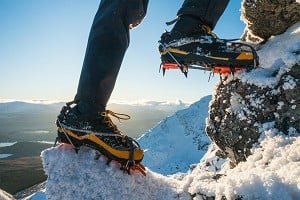
For 2019 Hanwag have comprehensively updated their previous Ferrata Combi boot. Aside from the last it's all change, so the Ferrata II GTX is best considered a brand new model that shares a name and a remit but little else. For winter use I got on very well with its predecessor. How about the upgrade?
The name suggests a boot for via ferrata, and while the Ferrata II would undoubtedly be good for a more serious high mountain VF, particularly one involving snow, it's suitable for a lot more besides. From UK scrambles to winter Munros, lower grade winter mountaineering to Alpine summer, this new version of the Ferrata looks like a capable and versatile B2 boot.
We reviewed the original model in our B1/B2 group test last winter, and were very taken with its balance of support, protection and comfort. Well while the new version shares little with its predecessor I'm pleased to say it's been feeling just as good in all these areas. As an added bonus, it's lighter and a bit more nimble on the foot.
Having tried them on at home, I was so confident of their fit that I immediately took them on an overnight trip on the Cuillin (not a full traverse - I wasn't that confident!). The gamble paid off, and I suffered no hot spots, rubbing, pinching or blisters.
Yes they did feel overly warm for the high teens temperatures of July - but less so than I'd feared. Inevitably they also felt a bit clumsy and clompy on the sort of technical summer terrain on which I'd got used to wearing approach shoes. But I adjusted my gait to match, started exploiting their stiff edging performance rather than trying to smear, and we got on fine together. In fact their comparative warmth came in welcome when the temperature dropped with the sun; and the solid protection became a positive bonus when sliding down the Great Stone Chute. Big stiff boots have advantages even in summer - and the Ferrata II GTX feels less chunky and cumbersome than many in its class.
Weight
At 1756g/pair in my sample size 46.5 (Hanwag say 1440g size 8) the new Ferrata II has shed some of the weight of its predecessor - a welcome slimming down, albeit rather less than the 'up to 10%' suggested in marketing material. In the same size, the original Ferrata Combi weighed 1866g, which was towards the upper end of last year's mountain boot group test. For winter use I liked the old boot a lot, but I think it'd feel quite big and uncompromising in the summer; in contrast the new version isn't only lighter on paper, but feels lighter still in use - and that has definitely extended its seasonal remit.
Fit
The Ferrata II GTX comes in both men's and women's/low volume versions. Hanwag say it's designed to marry walking comfort with technical performance. Of course any boot manufacturer is going to want to say that, but in my experience so far that's exactly what they seem to have managed. Even after a long mountain day I've found the Ferrata II still feels comfy.
Both iterations of the Ferrata are cobbled on Hanwag's Alpine Wide last, which seems slightly less asymmetric than some technical rock-oriented mountain boots. It's a medium-wide fit with plenty of volume - a good thing for toe wiggle room in cold weather. In both boots there's a slightly fitted feel in the midfoot, and a hint of arch support. The heel is held firmly in position, but without putting pressure on the achilles, and I've had no trace of heel lift in the Ferata II. However in terms of width at the front the new version does feel as if it has a marginally more pointed toe. I guess my original Ferrata Combis have broken in a fraction, while the new Ferrata IIs are yet to give. They still suit my wide foot, and I'd still call them medium-wide; but users with a squarer foot will want to try this boot carefully before buying, with an eye to its toe.
Upper
Hanwag have done away with the suede panels of the original Ferrata in favour of fully synthetic alternatives: a tough PU-coated microfibre (synthetic leather look-alike) beside the tongue, which helps wrap around the top of the foot; really durable textured polyurethane/nylon fabric along the sides to give structure; and softer and more flexible woven polyamide on the tongue and the flex point of the ankle cuff. Though there's quite a lot of panelling the seams are inside, so external stitching has been minimised; this reduces potential points of wear or failure, which should help give the uppers a long life. A high rubber rand offers all-round protection both to the boot and the wearer. This comes right across the top of the toe, giving more coverage than you tend to see on winter boots. While that might be good when kicking steps into hard snow or jamming your feet into cracks, it's also bound to be a bit sweatier at the very front than a boot without an over-the-top toe cap.
The stretchy tongue and soft ankle cuff give a comfortable close fit without feeling bulky or restrictive. At the cuff there's a well-judged balance of give versus support, so your ankle feels protected from rolling while still having a good range of movement. While the cuff is about mid-height for a B2 boot - you'll certainly find lower - thanks to its design I've found it allows footwork that feels natural and precise when scrambling, a big advance on the rather chunky and inflexible cuff of the Ferrata Combi. This small but important change makes the Ferrata II a noticeably better boot on technical ground. It also feels a little more forgiving when walking.
Lacing is smooth-running, with low-profile webbing eyelets in the forefoot and a locking pair below the cuff that allow you to vary lace tension in different parts of the boot; unfortunately the locking mechanism has proved quite hard to disengage so far, and doesn't seem to be loosening with use.
A nice soft lining, some good firm padding, and a Gore-Tex waterproof/breathable insert complete a very decent upper. It's a little warm for full-on summer use, perhaps, but show me a protective, supportive B2 mountain boot that isn't! One key question that I've not yet had a chance to answer is how insulated it feels when the thermometer dips below zero. I'll have to report back after winter use.
Sole
A carbon-reinforced midsole gives a lot of forward rigidity for secure front-pointing, and loads of lateral stiffness for all-round support. The sole provides a really solid platform for the foot on rough ground, and when load carrying. For winter mountaineering it is clearly going to be ideal. In my larger size I'd be drawing the line at about Scottish grade II, while some users with a smaller foot (less leverage on the sole) might conceivably push their performance a bit further on steep winter ground. For scrambling the solid sole is great for holding a small edge but of course feels clog-like if you're on slabby ground. You really can't have it all, though the stiffness underfoot is mitigated to an extent by the flex of the cuff.
Though Hanwag don't offer a B-rating on their website, this is very much a B2 sole. There's a ledge at the heel for the rear clip of a semi-automatic crampon, and while I haven't had a chance to show it any winter action as yet, the fit with my Grivel Air Techs is absolutely spot-on (snug and secure across the whole sole, with plenty of front point showing past the toe). Compared to the Ferrata Combi the rocker at the toe has been slightly toned down, so while it still gives a nice natural rolling action for comfy walking, the less-upturned toe should be more amenable when it comes to fitting different models of crampon.
Hanwag's 'TubeTec' sole is interesting. This wraps a deep, cushioning PU layer inside a much tougher TPU outer, the idea being to give you more shock absorption than a traditional mountain boot sole, while protecting the softer PU from damage. Though I have yet to devise a reliable way of measuring a sole's cushioning, it does anecdotally seem to work, giving a slightly more forgiving feel than many winter boots when you're plodding along on the flat.
Underfoot it's a Vibram Mont outsole, with deep well-spaced lugs that clear mud readily, and look like they'll give plenty of purchase in soft snow. You get a really substantial heel breast for downhill braking, and flat climbing zones at the toe and heel. The rubber compound feels quite soft for a winter boot - it's certainly softer than the Ferrata Combi's - and while the friction on rock has been excellent so far it's worth noting that after a few days on Skye gabbro (a famously unforgiving rock) the edge at the front is already showing signs of wear. The good news is that despite their funky sole unit these boots are resoleable.
Summary
At £290, the Ferrata II is roughly on a par with equivalent models from other brands, and though it's a lot more expensive than its predecessor I think you're getting a better boot for your money, with some key improvements that justify the price hike. This B2 boot has enough stiffness and support for winter or alpine use with semi-step-in crampons, but its flexible cuff and lighter weight make it more of an all-season prospect than its rather clumpy forerunner. If you want an all-year all-rounder, for scrambling and high mountain via ferrata as well as winter mountaineering, then the solid and well-built Ferrata II is a real contender.
Hanwag say:
Climbing performance meets hiking comfort. Ideal for alpine rock climbing, demanding via ferratas and high-alpine tours in summer. Lightweight and flexible with a hybrid crampon-compatible sole.
For more info see hanwag.com



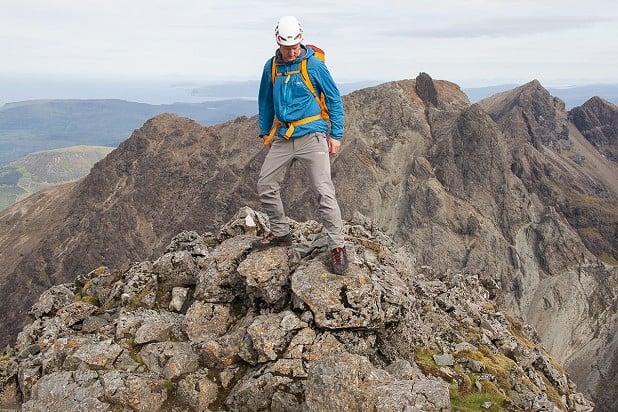
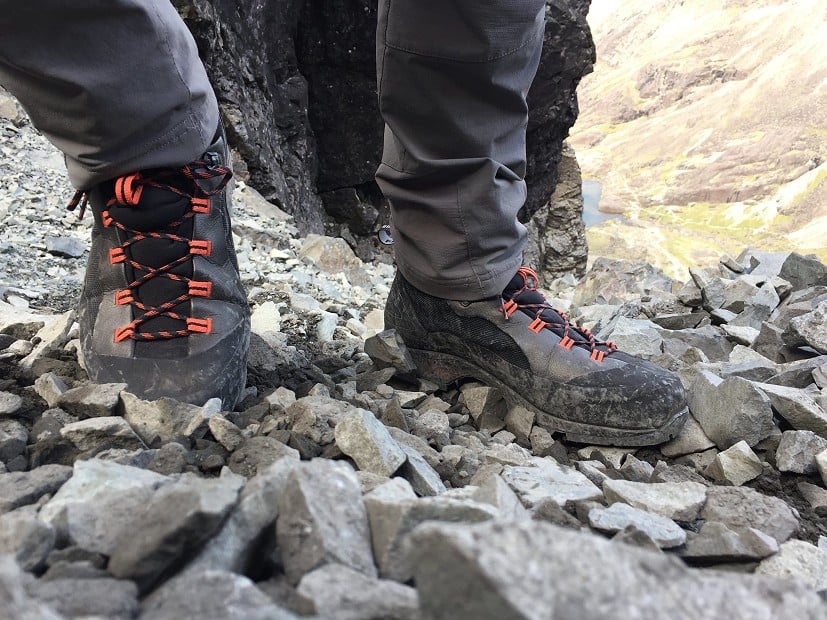
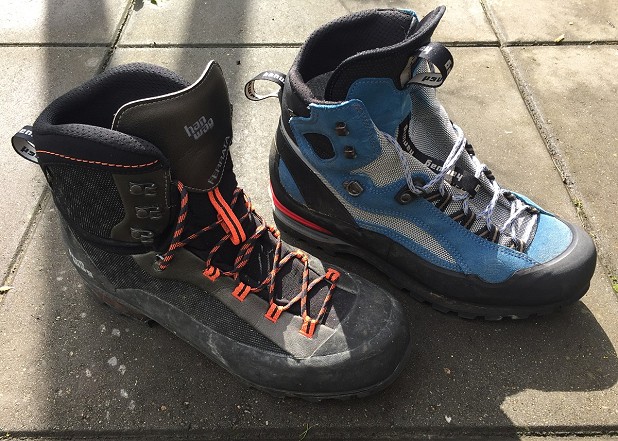
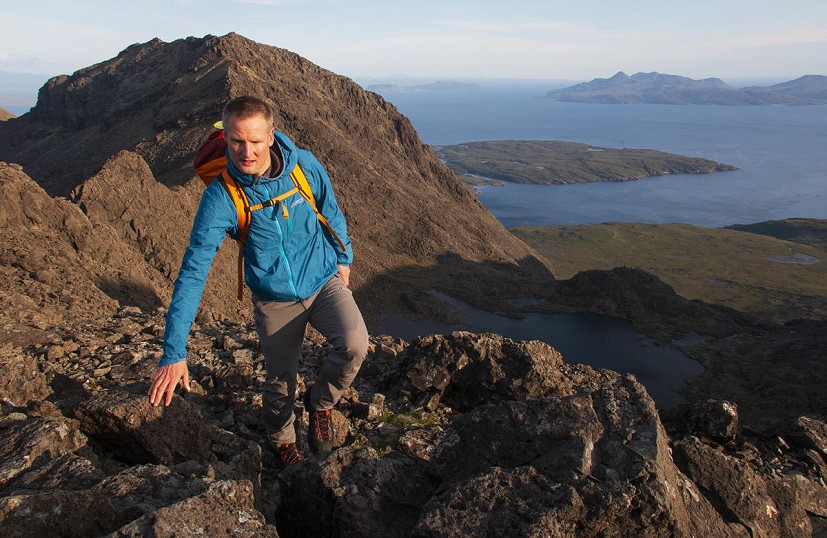
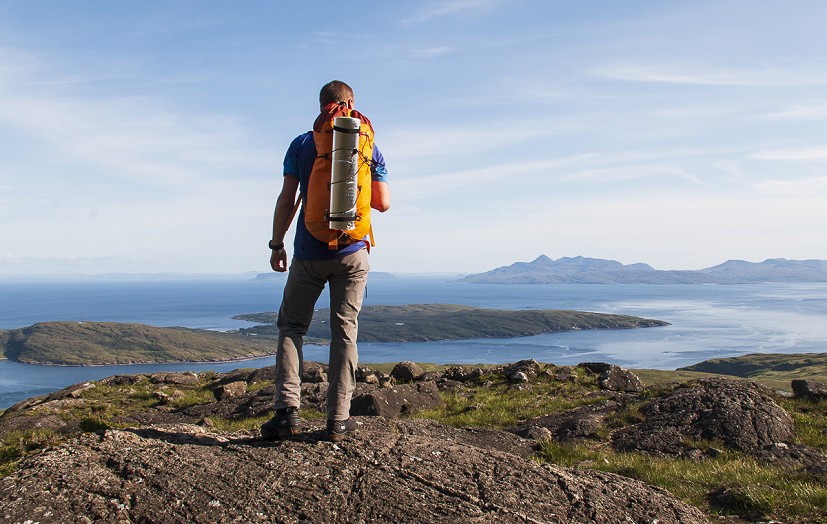
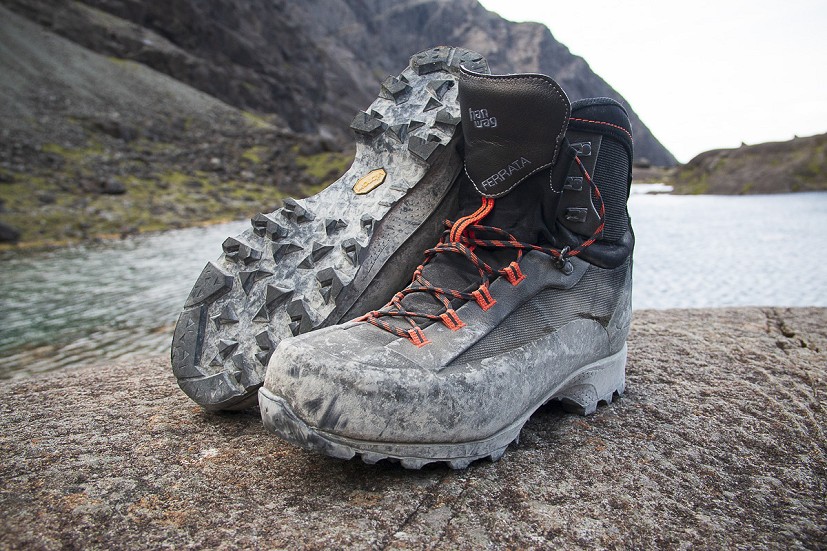
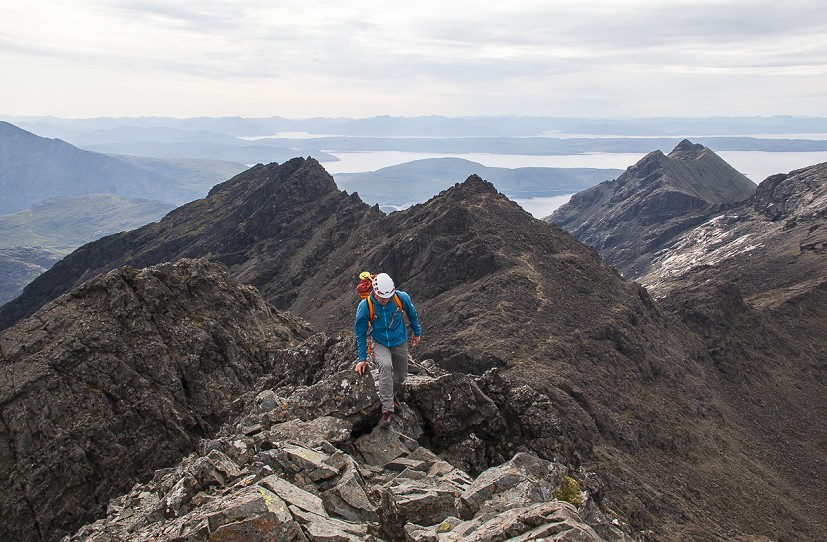
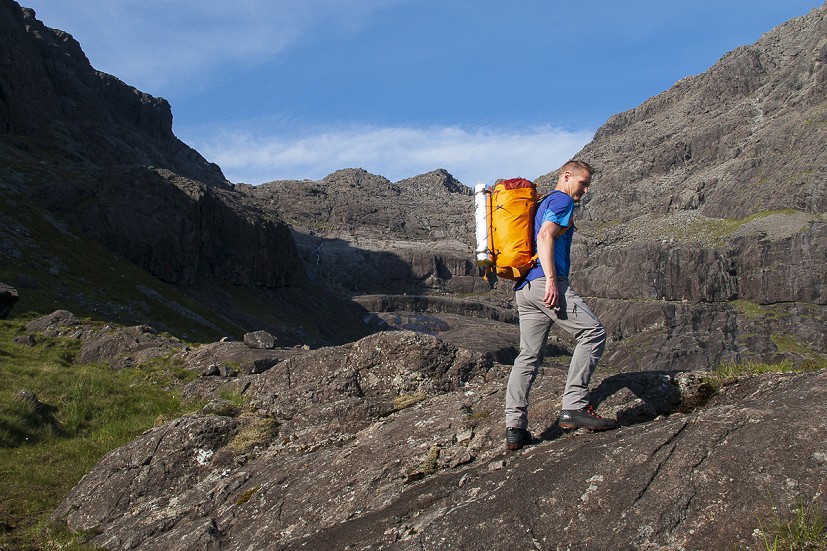



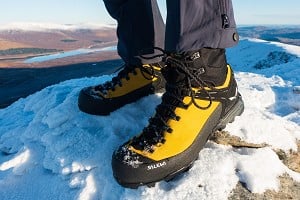
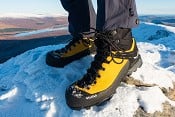
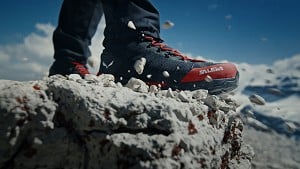

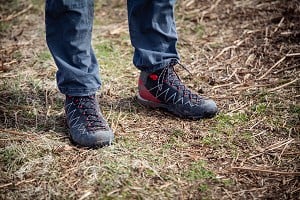

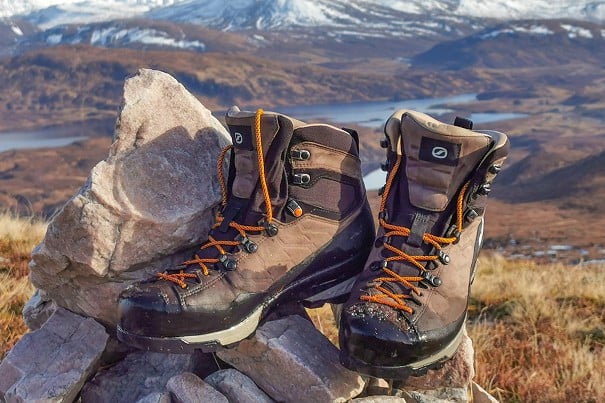
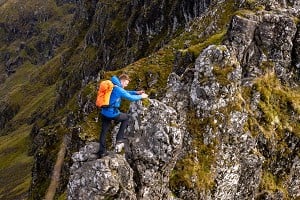

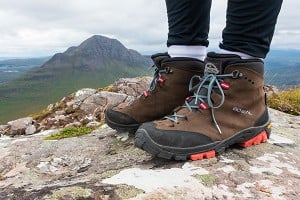
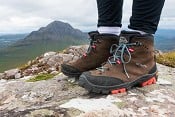
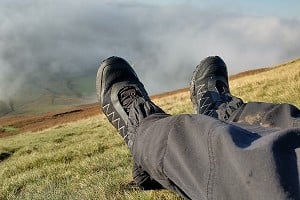
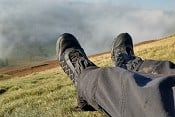
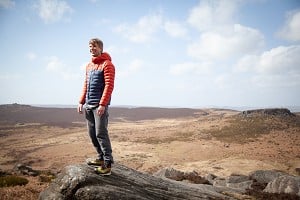



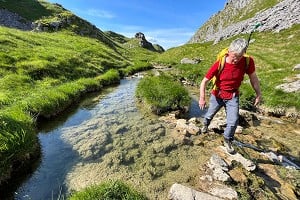
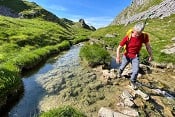


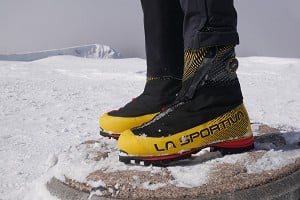
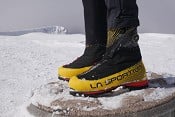
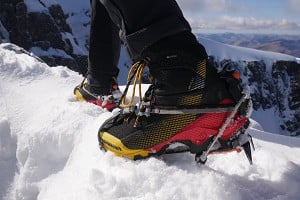
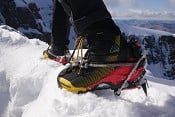
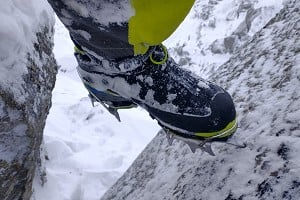
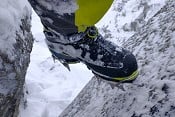
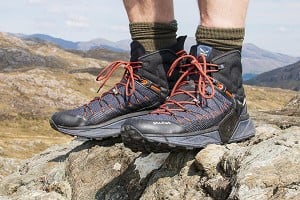
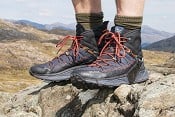
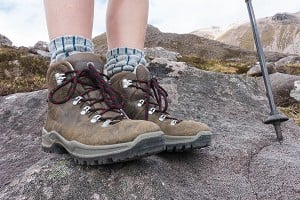
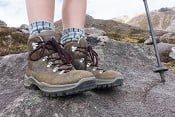

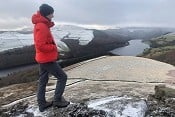

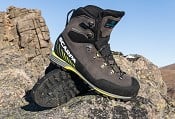
Comments